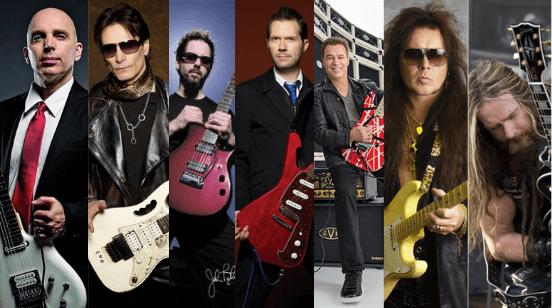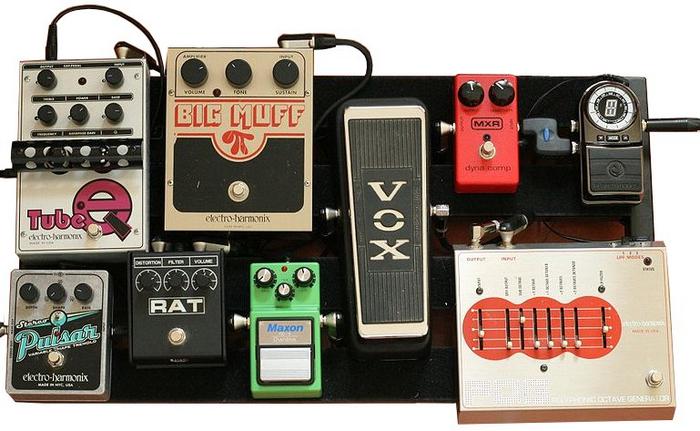Did you know that *Michael Schenker’s guitar solos* have been credited with shaping not only songs but entire eras of rock music history? This bold statement might seem like an overreach, but having spent decades observing the evolution of rock, I can attest to the transformative impact of Schenker and his unique style. At a time when rock music was desperate for innovation, Schenker’s explosive riffs and melodic inventiveness emerged as a beacon, leading the charge towards a new frontier of guitar expression. His mastery and passion didn’t just influence the sound; they revolutionized how the guitar was respected and perceived in the genre. As we delve deeper into the mystique of Michael Schenker, we will explore not just the famous solos and signature techniques that defined his career, but also his enduring legacy as a rock guitar virtuoso. What makes his contribution so profound? Let’s find out.
Who is Michael Schenker?

As an editor who has covered many extraordinary musicians, I have often found myself fascinated by the prodigious rise and enduring legacy of Michael Schenker. His talent wasn’t just born from practice; it was something *innate*, a gift recognized early on. Did you know that Michael Schenker joined UFO at just 17 years old? Joining such an influential band at a young age highlights not only his exceptional talent but also the unique spirit of that era, where music was both rebellious and evolutionary. At that time, Schenker’s blend of *melodic finesse and rock aggression* was rare, propelling UFO to new heights and cementing his status among guitar aficionados.
What truly sets Schenker apart is how he transitioned from being a teenage prodigy to forming the Michael Schenker Group, carving out a solo path defined by constant evolution. Throughout his career, he has never shied away from taking musical risks, earning him a distinct place in the annals of rock history. This biographical journey—though deeply personal—resonates with anyone who appreciates the raw and transformative power of music. Through Schenker’s story, we see not just the life of a musician but a *chronicle of rock music’s evolution*. His biography is a tapestry woven with threads of innovation, passion, and relentless pursuit of the extraordinary.
What are Michael Schenker’s Guitar Techniques?
Signature Styles and Techniques

Why do guitarists around the world strive to emulate Schenker’s style? The answer lies in the intricate tapestry of guitar techniques that he has woven throughout his illustrious career. In my time reviewing countless guitarists, the passion and flair embedded in Schenker’s technique is something that transcends mere technicality—it’s an experiential journey. His playing embodies a mastery that combines precision with creativity, characterized by dynamic phrasing and an unmistakable melodic sensibility.
One of Schenker’s hallmark techniques is his use of the flying V guitar, allowing for expansive expression and bold stage presence. He expertly crafts vibratos and employs meticulously timed pick attacks, creating a sound that is both aggressive and melodious. His solos often feature a seamless blend of classical influences and rock-centric bends, making his style not only iconic but deeply influential for aspiring rock guitarists.
As we explore Michael Schenker’s signature contributions to the rock guitarist’s arsenal, it’s clear that his blend of technical prowess with emotional depth remains a beacon of influence, inspiring musicians across generations. Transitioning now to his famous guitar solos, we can further appreciate how these core techniques manifest in his unforgettable performances.
Famous Guitar Solos

What if I told you that some of the most iconic rock guitar solos were penned by Schenker? With my background in promoting iconic guitar moments at Guitar Player, it’s exhilarating to appreciate the sonic landscape Schenker has crafted over the decades. His solos are not just technical displays; they are emotive narratives, rich in tone and complexity. The gravity of Schenker’s work becomes apparent when examining some standout performances by the Michael Schenker Group. Each solo is a testament to Schenker’s mastery; from the fiery zeal of “Into the Arena” to the soulful bends in “Rock Bottom.” What makes these solos groundbreaking is their ability to blend melody with technical prowess, a signature style that has influenced countless guitarists. By weaving intense emotion with virtuosic skill, Schenker redefined what a rock solo could convey, eternally shaping the technique landscape of his genre.
When Did Michael Schenker’s Career Take Off?

Reflecting on Michael Schenker’s storied career, I often ponder: Was Michael Schenker’s rise to fame inevitable, or a series of fortunate events? In my experience chronicling the journeys of rock legends, the trajectory of Schenker’s success combines an undeniable talent with well-timed opportunities—a reminder of the intricate dance between skill and fate in the music industry. His journey to stardom was not a singular, meteoric rise but rather a cumulative series of events that established him as a guitar virtuoso.
His career truly began to ascend when he joined the ranks of the iconic band UFO. This partnership proved pivotal, marking the shift from Schenker being an accomplished guitarist to an international force in rock music. During these formative years, his electrifying performances on *music tours* captivated audiences worldwide, with Schenker’s distinctive style infusing new energy into UFO’s sound.
As I delve deeper into the *Michael Schenker biography*, it’s evident that his dynamic guitar solos and innovative techniques set him apart, resonating with fans and critics alike. The span of his career during this era was highlighted by critically acclaimed albums such as “Phenomenon” and “Force It,” both of which showcased his evolution as an artist. These key moments cemented his place in the annals of rock history, creating a legacy that still influences musicians today.
Where Does Michael Schenker Fit in Rock Music History?

In my efforts to highlight influential guitarists, Michael Schenker stands as an unmistakable beacon of creativity and skill in rock music history. *How has Schenker changed the landscape of rock guitar playing?* This question lingers as I reflect on his profound impact on guitarists all over the world. With his extraordinary talent, he didn’t just play the guitar; he reshaped the expectations of what rock music could sound like, infusing it with his distinct flair and intensity.
When tracing his journey from his early days with the Scorpions and UFO to his remarkable solo career, one begins to see the transformative ripples Schenker sent through rock music. His melodic solos and seamless blend of technical proficiency with emotional expression set a new standard. For many aspiring guitarists, Schenker’s mastery became a blueprint for excellence. His influence resonated deeply, inspiring a new generation of musicians who sought to emulate and build upon his innovative techniques. Among iconic guitarists, Schenker remains a figure of deep respect and emulation, a symbol of how personal style can redefine an entire genre.
Through his work, Schenker carved a niche for himself, ensuring his rightful place in the annals of rock music history. His unyielding pursuit of musical perfection continues to inspire and challenge musicians to explore the outer limits of their creativity, reinforcing his legacy as a true guitar virtuoso.
Why is Michael Schenker’s Guitar Gear Important?
Iconic Guitars Used by Schenker

Michael Schenker, a virtuoso whose gear choices define his *signature sound*, often piques curiosity. What makes the Flying-V guitar so integral to Schenker’s music? This query opens a window to understanding his iconic tone. Schenker’s use of the *Flying-V guitar*, a staple in his arrangements, is more than a personal preference; it is a cornerstone of his distinctive sound. The angular body of the Gibson Flying-V naturally complements his precise picking techniques, contributing to the aggressive yet melodic style he’s renowned for. I’ve often explored how equipment choice is paramount, especially with Schenker’s unique play style that resonates intensely with fans and players alike. His decision to use various *Gibson guitars* showcases a deliberate alignment with instruments that enhance his artistic expression, cementing his legacy as a masterful guitarist. This *careful selection of guitars* not only shaped his sound but also influenced the broader rock genre, illustrating why Schenker’s guitar gear remains a topic of importance and fascination.
Effects and Amplifiers

Could the right amp be the difference between good and great guitar sound? From my experience reviewing guitar gear, I can confirm that Schenker’s tone is as much about the amps and effects he chooses as it is about his playing technique. **Amps and effects** are vital elements that amplify Schenker’s natural prowess, refining his unique sonic signature and ensuring he stands out in rock’s prolific landscape.
Schenker’s soundscape isn’t just a result of his **masterful guitar playing**, but also of the thoughtful selection of gear that encapsulates his musical vision. His use of specific amplifiers and effects pedals enables him to sculpt the dynamic tones and textures that define his iconic solos and riff-heavy anthems. The marriage of the right equipment with Schenker’s technique delivers the immersive aural experience his fans recognize and revere. This strategic coordination of gear and artistry highlights why understanding Schenker’s equipment choices enlightens fans and musicians about the nuanced echelon of his craft.
Within the sphere of rock music, where every note counts, Schenker’s meticulous attention to his gear reflects a broader understanding of how technology serves as an extension of artistic expression. As we delve further into **’Iconic Guitars Used by Schenker‘**, it’s clear that his gear is not just a tool but an integral component of his artistic legacy.
FAQs
Who is Michael Schenker?
What are some of Michael Schenker’s notable achievements?
Which bands has Michael Schenker been associated with?
What is the Michael Schenker Group?
Why is Michael Schenker considered a virtuoso?
Conclusion
Reflecting on the many years I’ve spent in guitar journalism, I’ve witnessed how Michael Schenker’s *brilliant solos* and *intricate techniques* have carved a distinctive niche in rock music history. His innovative approach has not only set a high bar for technical prowess but also infused emotional depth into rock, captivating an entire generation. *What legacy does Michael Schenker leave for future guitarists?* His influence is profound and far-reaching, serving as a powerful inspiration for aspiring musicians to push their limits and explore uncharted musical territories.
Throughout his career, Schenker’s unique fusion of melody and virtuosity has left an indelible mark and provided a blueprint for countless guitarists aiming to make their own mark in the world of rock music. By consistently challenging the boundaries of what can be achieved with a guitar, he has ensured that his legacy will continue to resonate, influencing future talents and preserving his place as a *formidable figure* in the annals of rock music.

Michael Molenda, the transformative Editor in Chief of Guitar Player magazine from 1997 to 2018, revolutionized its content and expanded its influence. With over 2,500 published works, including in-depth interviews and technical analyses, he’s a giant in guitar journalism. Post-Guitar Player, he launched CONTENT BY MOLENDA and co-founded music websites, bringing his unmatched expertise to the forefront of music marketing. At Fretterverse, Molenda continues to shape the guitar world with insightful commentary and trendsetting journalism.
